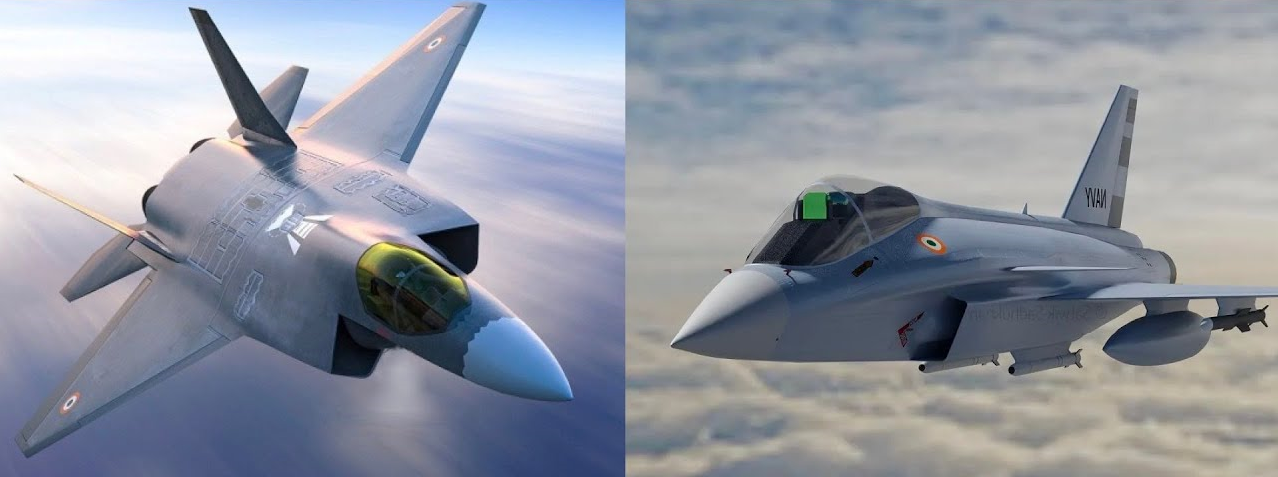SOURCE: RAUNAK KUNDE / NEWS BEAT / IDRW.ORG

India’s Ministry of Defence (MoD) has embarked on an ambitious journey to develop and execute high-priority military projects under the Special Purpose Vehicle (SPV) model. This approach involves a government agency leading the project and partnering with private sector companies to develop critical technologies and components. While the SPV model holds great promise, it faces challenges and uncertainties, particularly in enticing major private sector players to participate fully in projects like the Indian Multi-Role Helicopter (IMRH), 5th generation Advanced Medium Combat Aircraft (AMCA), and Deck-based Twin Engine Deck Based Fighter (TEDBF) fighter jet programs for the Indian Navy.
The IMRH program, which seeks to develop a modern helicopter for the Indian armed forces, highlights the lukewarm response from private sector companies. Despite India’s growing foray into the defence sector over the past few decades, many private sector companies have limited themselves to tier-II supplier partnerships in defence programs. This cautious approach stems from concerns over the availability of a skilled talent pool and the profitability of their contributions. Private sector players are wary of entering projects that may not yield viable profit margins.
Two critical military projects, the AMCA for the Indian Air Force and the 4.5 generation Deck-based Twin Engine Deck Based Fighter (TEDBF) fighter jet for the Indian Navy, have struggled to garner support for execution through the SPV model. Numerous rounds of discussions between MoD, HAL, and DRDO officials have not succeeded in securing the participation of major private sector companies.
Private sector companies advocate for HAL (Hindustan Aeronautics Limited) to remain the lead integrator in these programs, while they focus on Tier-II and Tier-III supply chain responsibilities. This approach involves manufacturing aerostructures, including key components like fuselage and avionics.
International aerospace giants such as Boeing, Saab, and Dassault have expressed their willingness to lead in the SPV model, with the condition that their fighter jets are selected under the Indian Air Force’s MRFA tender for 114 jets. These aerospace majors propose opening their subsidiaries in India to facilitate the transfer of technology (ToT) and ensure timely delivery schedules. For instance, Saab previously considered a deal with Adani Defense to manufacture the Gripen-E in India if it won the MRFA tender. Boeing has entered into a partnership with HAL, while Dassault seeks to take control of Dassault Reliance Aerospace Limited (DRAL), a joint venture between Dassault Aviation and Reliance Aerostructure Limited.
Both the AMCA and Deck-based TEDBF fighter jet programs are long-term endeavours, projected to take a decade or more before fruition. It is suggested that these programs be manufactured in the same facilities as the original equipment manufacturer (OEM) that wins the MRFA tender. This would involve significant collaboration between international aerospace majors and local Indian private-sector companies.
India’s efforts to execute high-priority military projects under the SPV model face challenges related to private sector participation, talent pool limitations, and profit margins. The collaboration with international aerospace majors offers potential solutions but requires careful consideration and negotiation. The success of these endeavours will significantly impact India’s defence capabilities and indigenous manufacturing capabilities in the years to come.
NOTE : Article cannot be reproduced without written permission of idrw.org in any form even for YouTube Videos to avoid Copy right strikes. Websites doing illegal reproductions will get DCMA and Legal Notices.